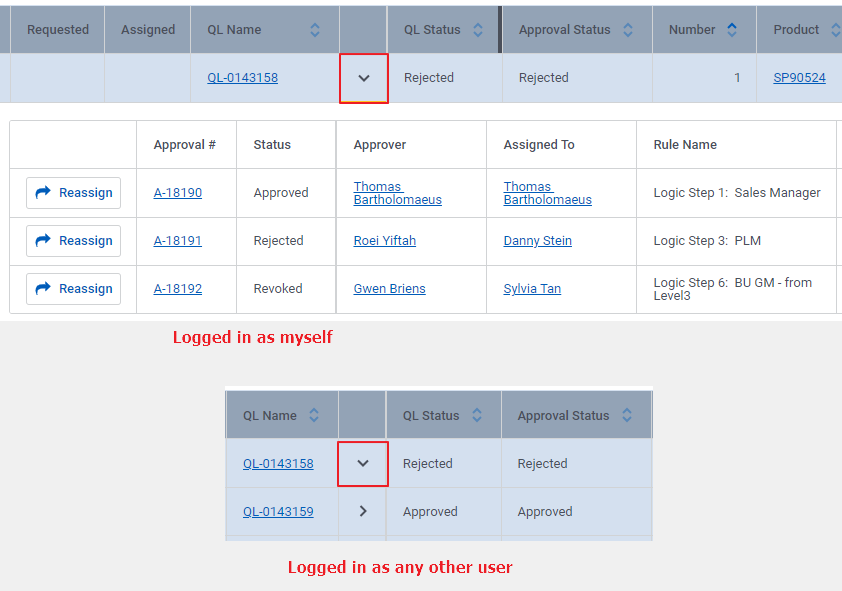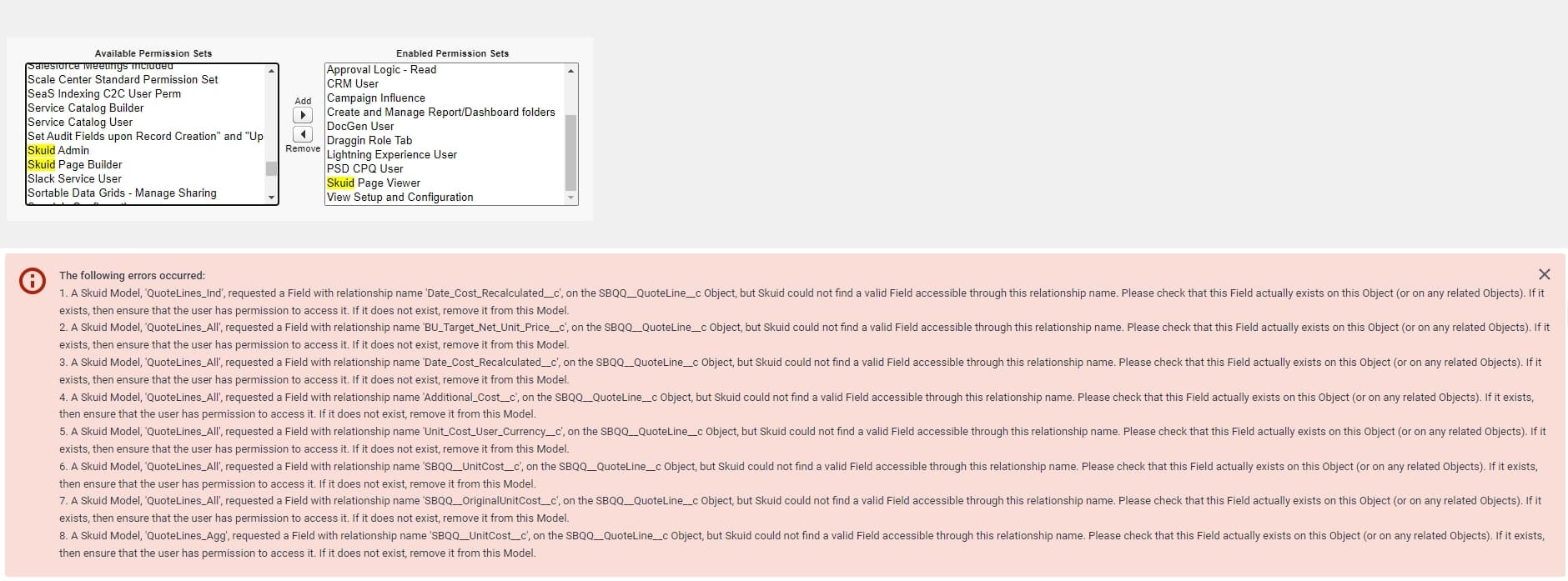I have a table with a drawer. Inside the drawer is a table with child records. (Parent is a Quote Line, children are the Approval records, for context.)
If I click the Drawer row action button as myself,* it works perfectly: opens the drawer and displays the table. The same is true when I use the “Open All Drawers” button I built using a Component Action tied to the table.
*Confirmed it works the same when logged in as another Admin.
The strange behavior is when logged in as anyone else - the drawer icon flips (I’m using a caret, so it turns when the drawer is opened). But there is no drawer - nothing changes other than the icon. It’s not as though the drawer opens, shows the table, but the data is missing. (Users can see this same list of Approval records in traditional Salesforce pages, so I don’t think it’s a records/permission issue.)
It’s as though the drawer itself is locked and refuses to open for everyone else. I don’t have any render or enable conditions on any of these functions, so I’m a bit flummoxed.
Screenshots for reference. Halp!








